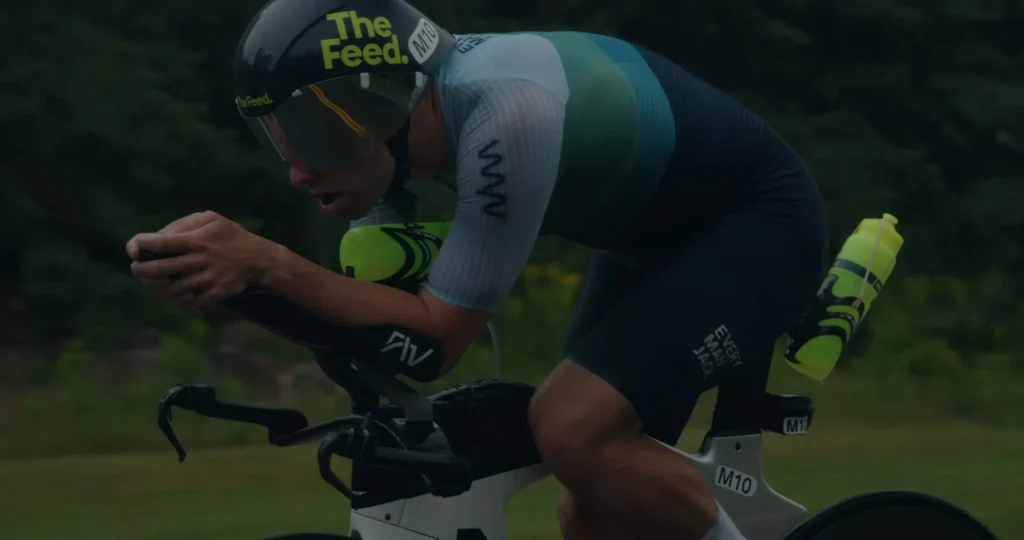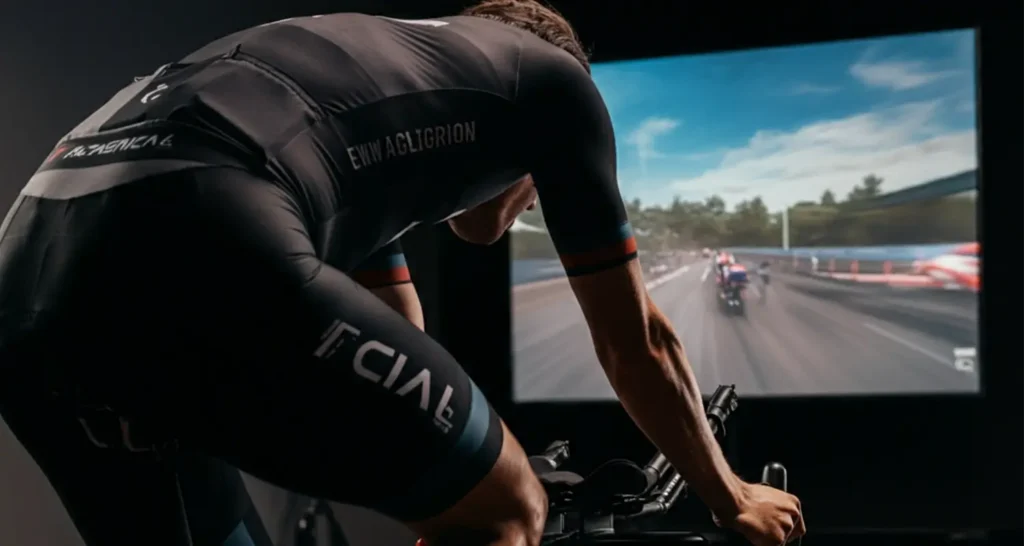
What Are Brick Workouts in Triathlon?
A brick workout is a specialized triathlon training session where you perform two disciplines back-to-back with minimal rest between them. The most common combination is the bike-to-run brick, though swim-to-bike and swim-to-run variations are equally valuable for comprehensive race preparation.
The term “brick” comes from either the heavy, “brick-like” feeling athletes experience in their legs when transitioning from cycling to running, or from the concept of “stacking” different workout disciplines like building blocks.
Why Brick Training Is Essential for Triathletes
Whether you’re a beginner tackling your first sprint triathlon or a seasoned Ironman competitor, brick workouts offer unparalleled benefits that directly translate to race-day success.
The Science Behind Brick Workout Benefits
1. Muscle Adaptation and Neuromuscular Training
Your muscles and nervous system need to adapt to the unique demands of switching between disciplines. The bike-to-run transition is particularly challenging because cycling primarily uses your quadriceps in a seated position, while running requires full-body coordination and different muscle activation patterns.
2. Cardiovascular Conditioning
Brick workouts challenge your cardiovascular system to adapt to changing demands, improving your aerobic capacity and teaching your heart to efficiently pump blood to different muscle groups as you transition between sports.
3. Mental Resilience Building
The discomfort experienced during brick training builds mental toughness. By regularly exposing yourself to the fatigue and awkwardness of transitions, you develop confidence and coping strategies for race day.
4. Race-Specific Training
Brick workouts provide the most race-specific training possible, closely mimicking the exact demands you’ll face during competition.
Essential Brick Workout Benefits for Triathlon Performance
| Benefit | Impact on Performance |
|---|---|
| Transition Efficiency | Faster T1 and T2 times, smoother gear changes |
| Reduced “Jelly Legs” | Less shock when starting the run segment |
| Improved Pacing | Better ability to maintain target pace under fatigue |
| Nutrition Testing | Opportunity to refine fueling strategies |
| Form Maintenance | Better technique retention when tired |
| Race Confidence | Mental preparation for competition stress |
How to Structure Your Brick Workouts
Beginner Brick Workout Structure
Start conservatively to build adaptation without overwhelming your system:
- Duration: 30-45 minutes cycling + 10-15 minutes running
- Intensity: Easy to moderate effort
- Transition: Practice quick gear changes
- Frequency: Once per week during base training
Intermediate Brick Progression
As your fitness improves, increase complexity and duration:
- Duration: 60-75 minutes cycling + 20-25 minutes running
- Intensity: Include some tempo or threshold efforts
- Variations: Add multiple short brick repeats
- Focus: Race-pace segments and nutrition practice
Advanced Brick Training
Experienced athletes can handle longer, more intense sessions:
- Duration: 90+ minutes cycling + 30+ minutes running
- Intensity: Race-pace efforts and high-intensity intervals
- Complexity: Multiple discipline combinations
- Specificity: Race-distance simulation workouts
Sample Brick Workout Plans by Experience Level
Beginner Sprint Triathlon Brick
- 30 minutes easy cycling
- 2-minute transition practice
- 10 minutes easy running
- Focus: Getting comfortable with the feeling
Intermediate Olympic Distance Brick
- 60 minutes cycling (include 3 x 5-minute tempo efforts)
- Quick transition with gear practice
- 20 minutes running (last 10 minutes at race pace)
- Focus: Pacing and nutrition testing
Advanced Ironman Brick
- 90 minutes cycling at race watts
- Practiced transition
- 30 minutes running at race pace
- Focus: Race simulation and mental preparation
Mastering Brick Workout Transitions
Setting Up Your Transition Area
Create a race-like environment for maximum benefit:
- Lay out gear in the order you’ll use it
- Practice helmet removal and running shoe changes
- Time your transitions to track improvement
- Include race belt, sunglasses, and nutrition setup
Transition Technique Tips
- Mount/Dismount Practice: Include proper bike handling skills
- Gear Organization: Develop a consistent system for equipment placement
- Mental Rehearsal: Visualize each step before executing
- Efficiency Focus: Minimize unnecessary movements and time
Common Brick Workout Challenges and Solutions
Challenge: Heavy, Dead Legs During the Run
Solution: Regular brick training progressively adapts your neuromuscular system. Start with shorter runs and gradually increase duration as your body adapts.
Challenge: Gastrointestinal Issues
Solution: Use brick workouts to test different nutrition and hydration strategies. Experiment with timing, types of fuel, and quantities to find your optimal race-day plan.
Challenge: Poor Transition Times
Solution: Practice transitions repeatedly during brick sessions. Time yourself and focus on eliminating wasted movements.
Challenge: Mental Fatigue and Motivation
Solution: Embrace the discomfort as race-specific training. Use positive self-talk and visualization techniques during difficult moments.
Brick Workout Programming and Periodization
Building Brick Workouts Into Your Training Plan
Base Phase: Focus on aerobic brick workouts with emphasis on form and adaptation Build Phase: Introduce race-pace efforts and longer duration bricks Peak Phase: Include race-simulation bricks with full gear and nutrition Taper Phase: Shorter, race-pace bricks to maintain feel without fatigue
Frequency and Recovery
- Beginners: 1 brick workout every 10-14 days
- Intermediate: 1-2 brick workouts per week during build phases
- Advanced: 2-3 brick sessions per week during peak training
Always balance brick training with adequate recovery to prevent overtraining and allow adaptations to occur.
Advanced Brick Workout Variations
Multi-Sport Brick Combinations
- Swim-Bike-Run: Full triathlon simulation
- Run-Bike-Run: Duathlon-specific training
- Bike-Run-Bike: Unique challenge for advanced athletes
High-Intensity Brick Intervals
- 5 x (10 minutes cycling + 5 minutes running) with short rests
- Perfect for building speed and transition efficiency
Long-Course Brick Simulation
- 3-4 hour cycling followed by 1-hour run
- Essential preparation for half and full Ironman events
Nutrition and Hydration During Brick Workouts
Use brick sessions as nutrition rehearsals:
- Practice Race-Day Fueling: Test gels, sports drinks, and solid foods
- Timing Experiments: Determine optimal feeding schedules
- Transition Nutrition: Practice consuming calories during transitions
- Hydration Strategy: Test fluid replacement rates and types
Technology and Equipment for Brick Training
Essential Gear Setup
- Transition Mat: Define your transition space
- Race Wheels/Tires: Practice with competition equipment
- Proper Footwear: Quick-lace systems for faster changes
- Timing Device: Monitor transition times and overall workout data
Monitoring and Metrics
Track these key metrics during brick workouts:
- Heart rate response during transitions
- Power/pace consistency between disciplines
- Transition times and efficiency
- Perceived exertion changes
Mental Strategies for Brick Workout Success
Positive Visualization
Before each brick workout, visualize smooth transitions and strong performance. Mental rehearsal improves actual execution.
Mantras and Self-Talk
Develop personal mantras for difficult moments:
- “Smooth and strong through the transition”
- “Every brick makes me race-ready”
- “This discomfort makes me tougher”
Goal Setting
Set specific, measurable goals for each brick session:
- Target transition times
- Pace consistency objectives
- Form focus points
Conclusion: Building Race-Day Success Through Brick Training
Brick workouts are the secret weapon that separates confident, well-prepared triathletes from those who struggle through transitions on race day. By consistently incorporating bike-to-run, swim-to-bike, and other brick combinations into your training, you develop the physical adaptations, mental toughness, and practical skills necessary for triathlon success.
Remember that brick training is about quality over quantity. Focus on proper progression, adequate recovery, and race-specific practice rather than simply accumulating training stress. Whether you’re preparing for your first sprint triathlon or targeting a personal best at Ironman, brick workouts will help you transition smoothly between disciplines and finish strong.
Start incorporating brick workouts into your training plan today, and experience the confidence that comes from knowing you’re prepared for every aspect of race day. Your future triathlon self will thank you for the investment in this specialized, race-specific training.
